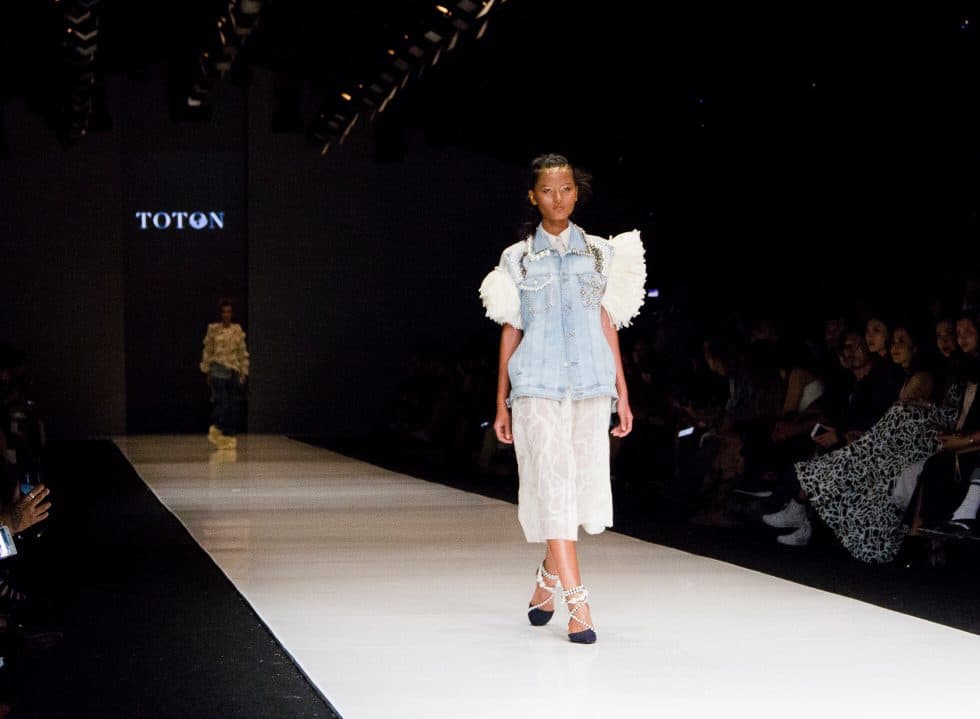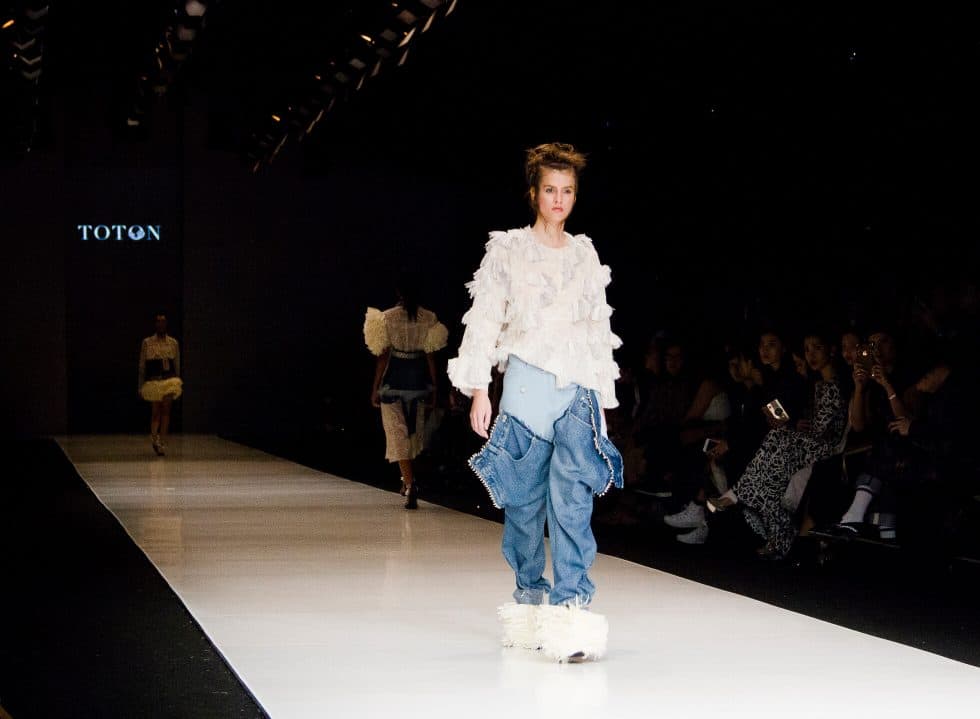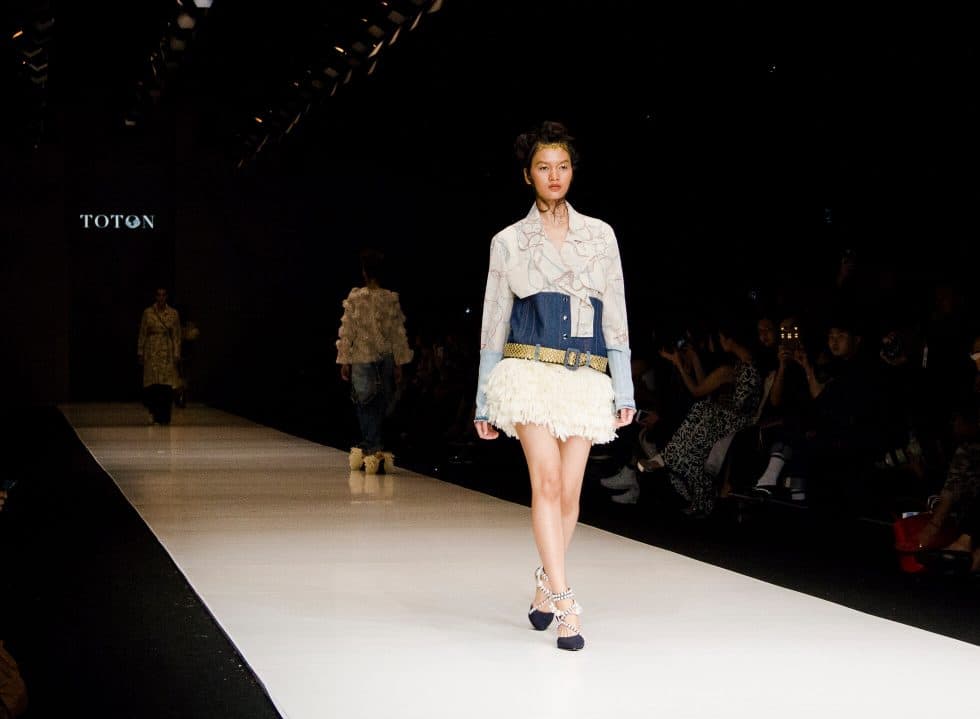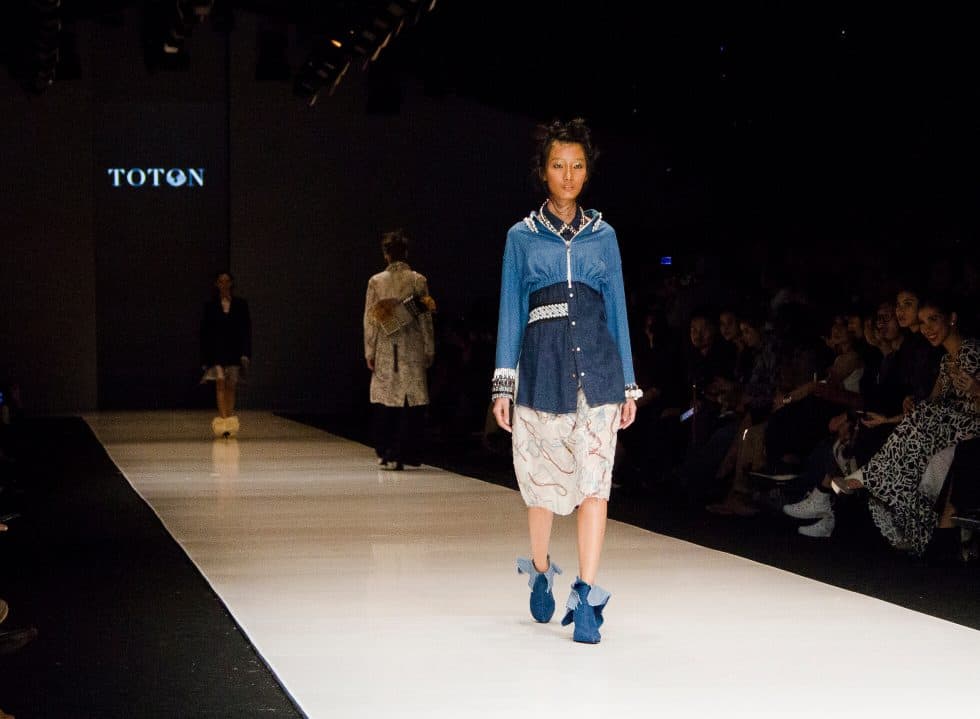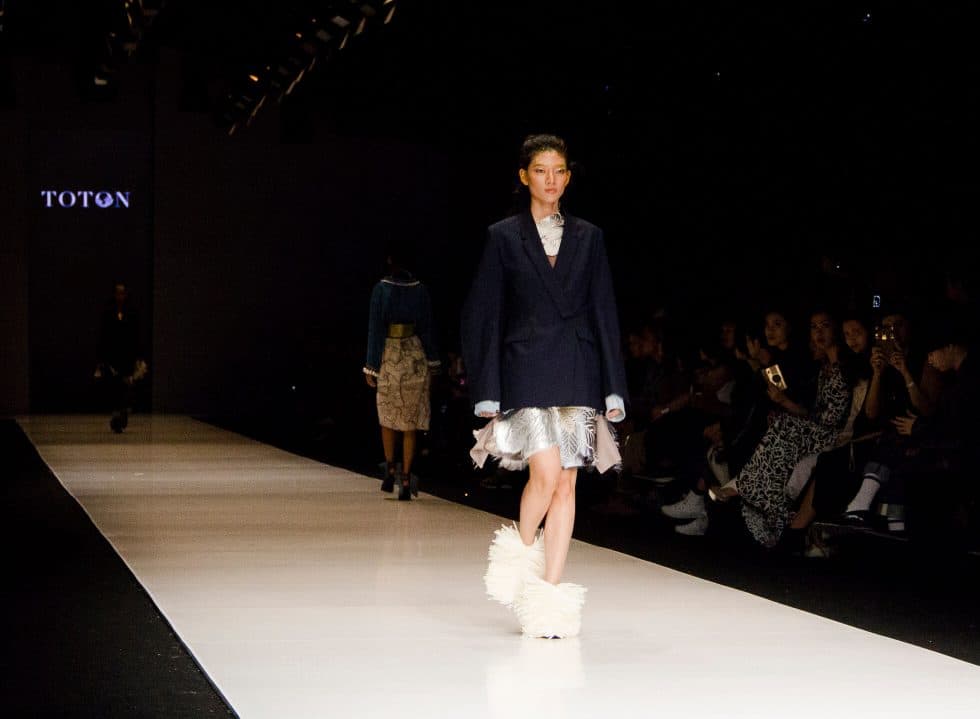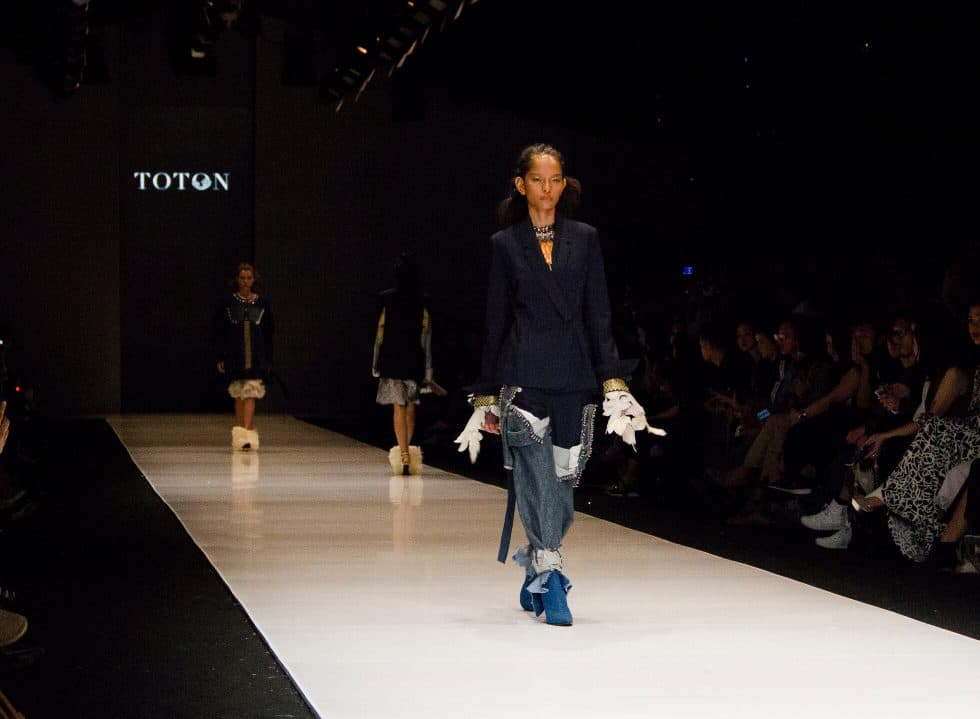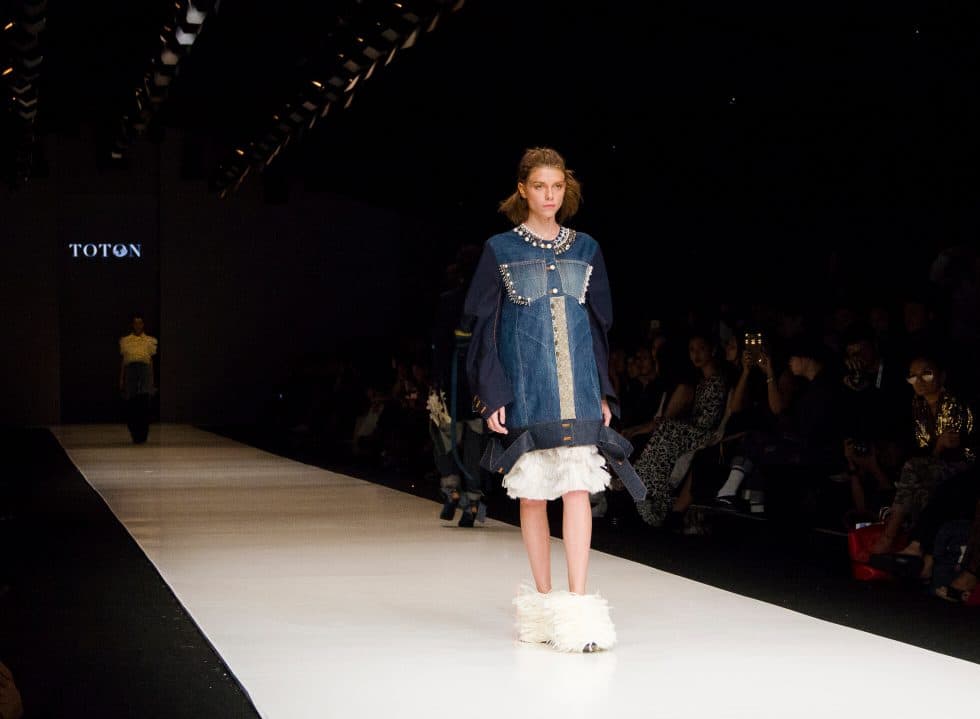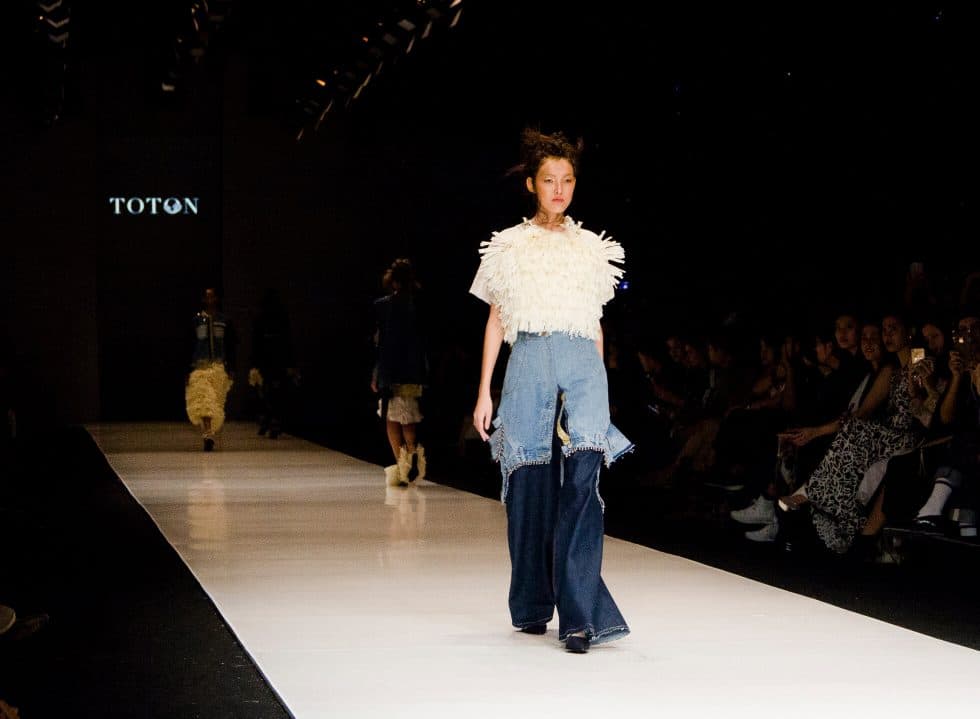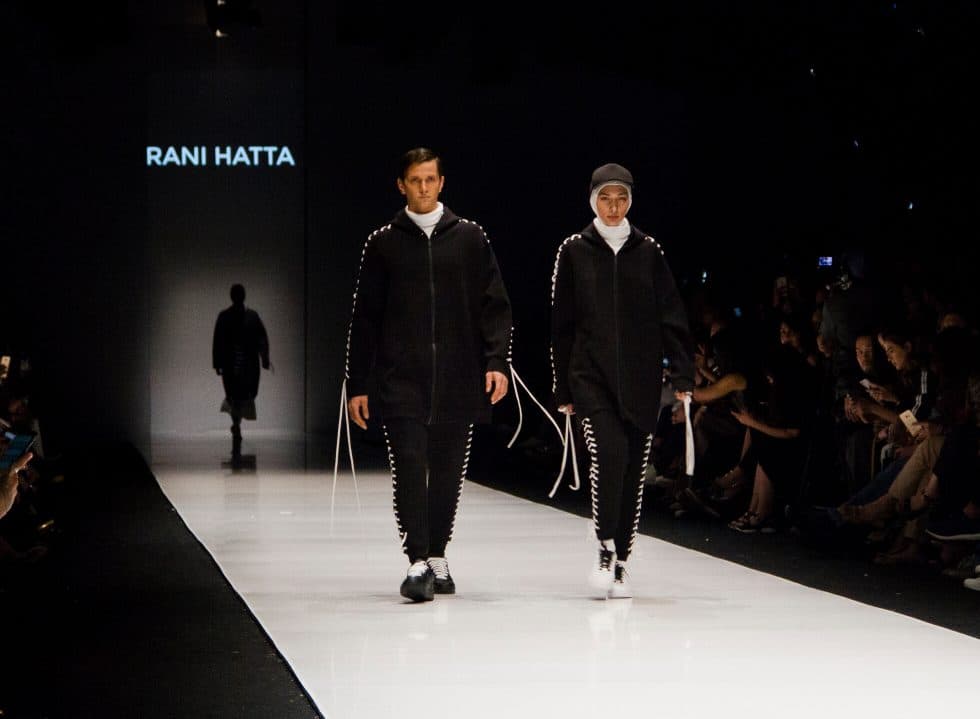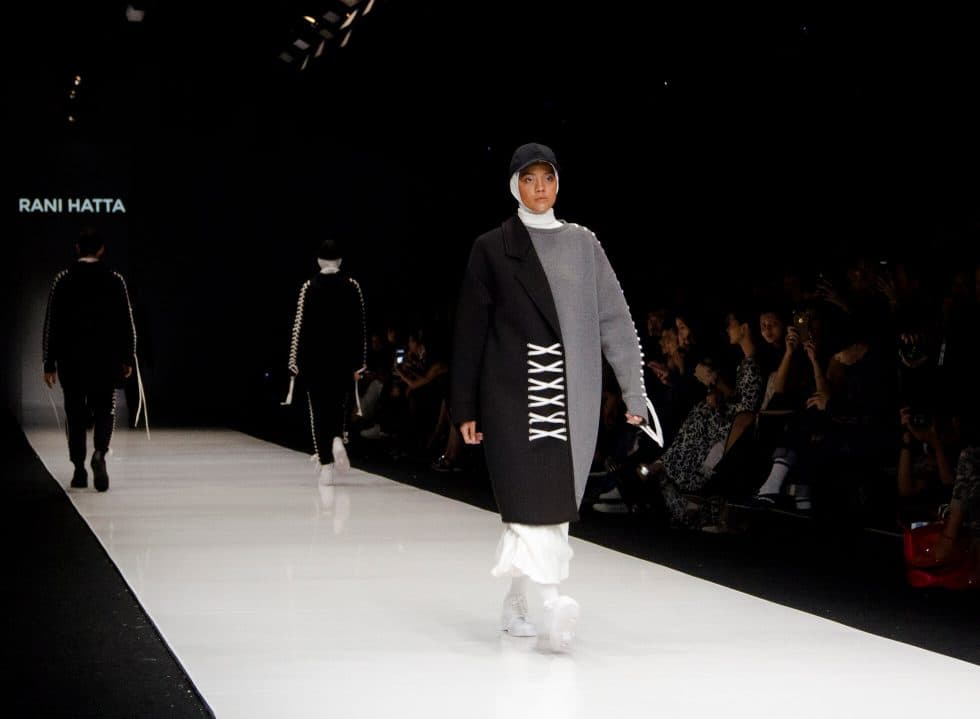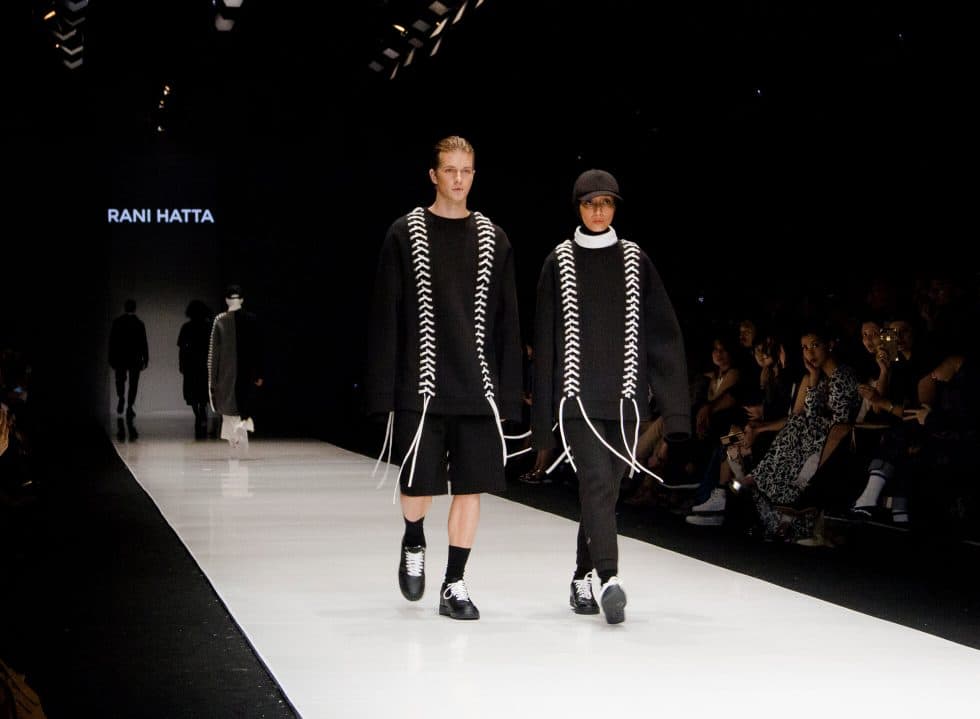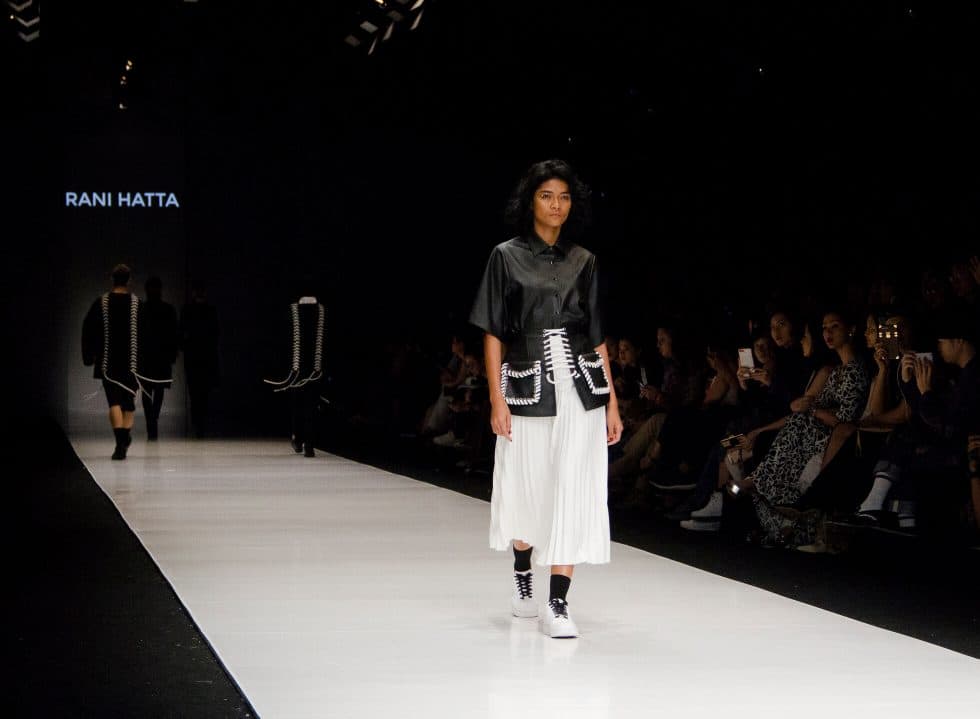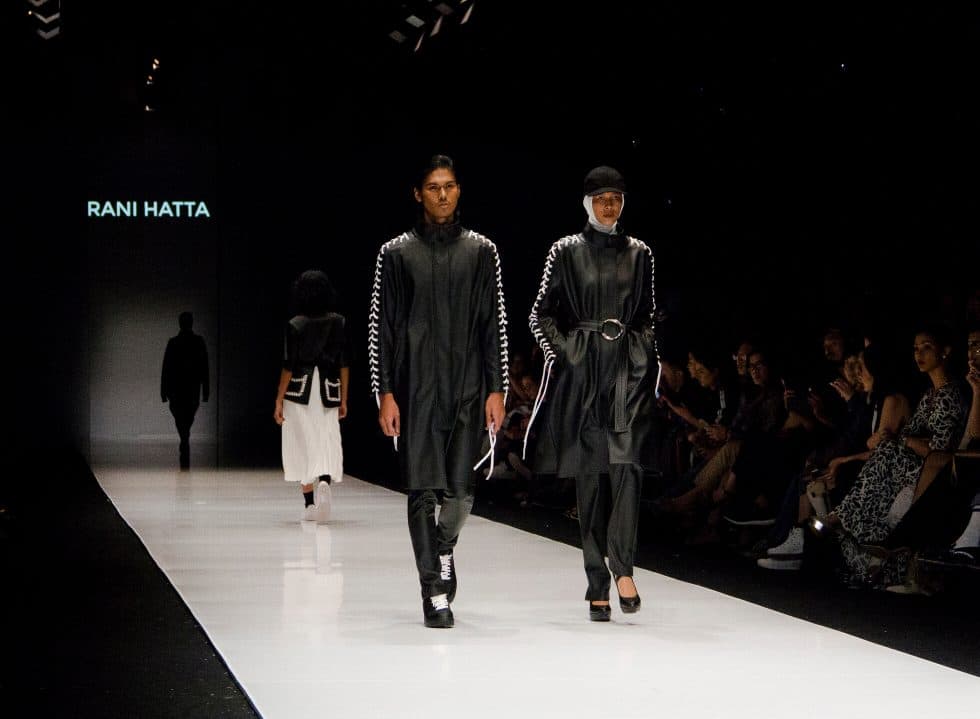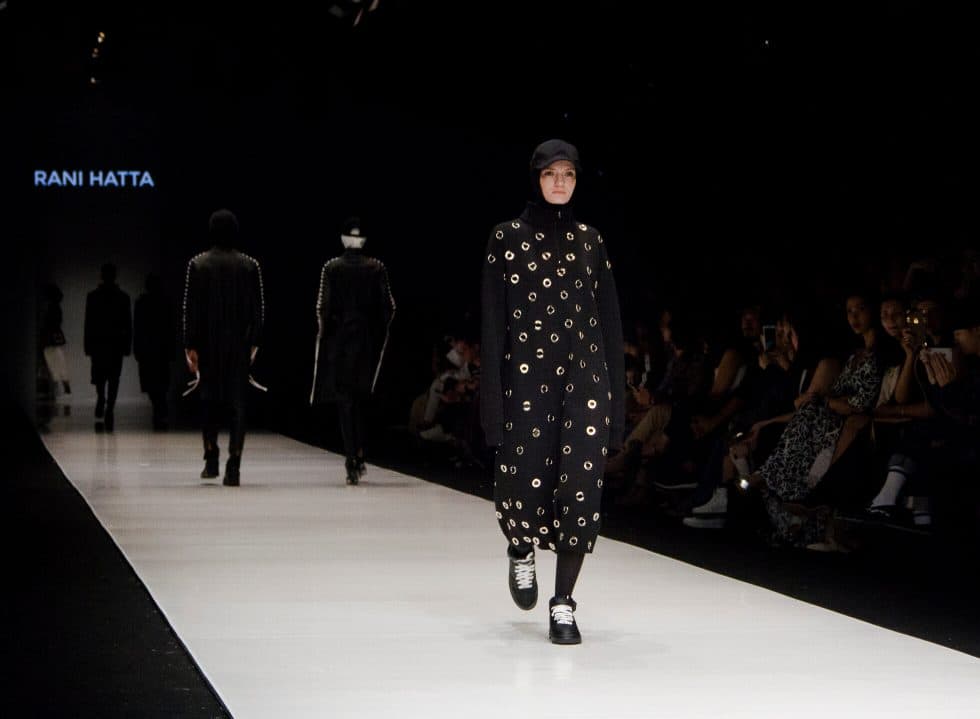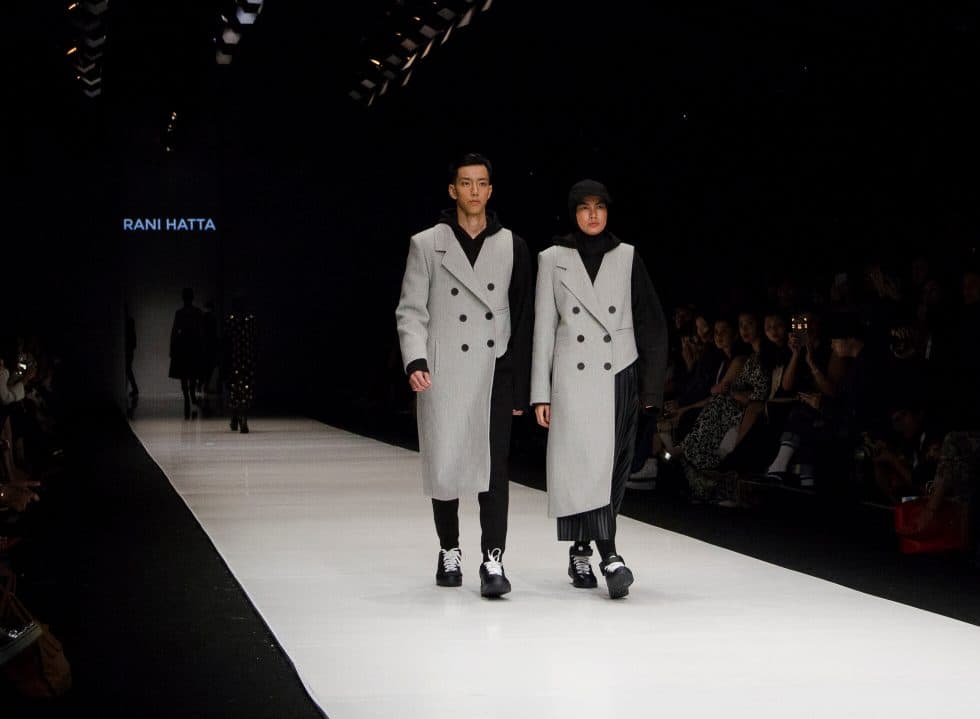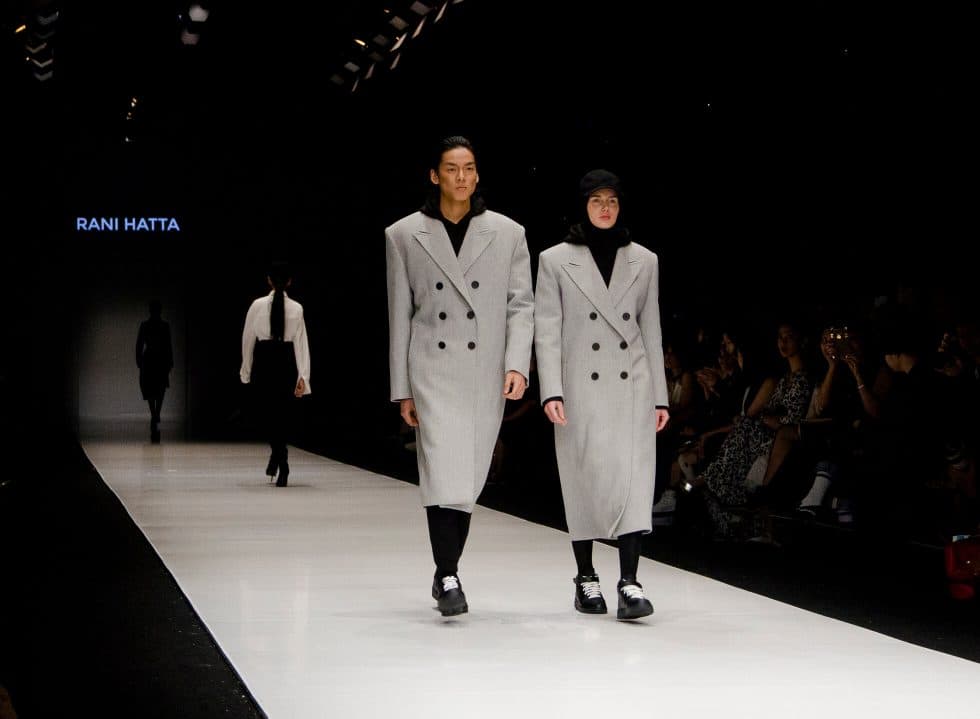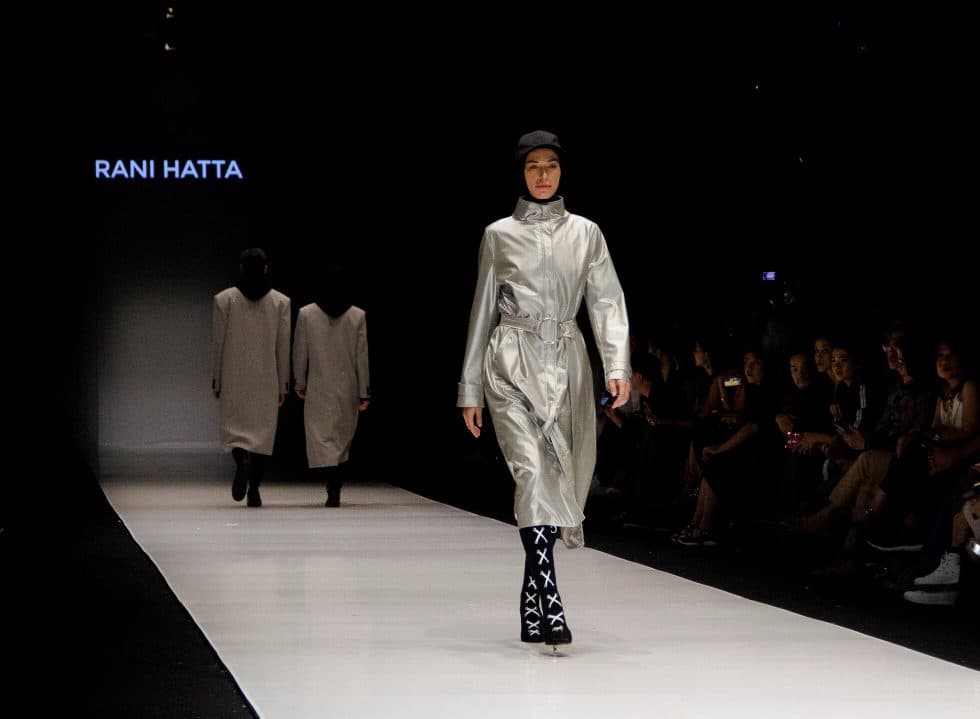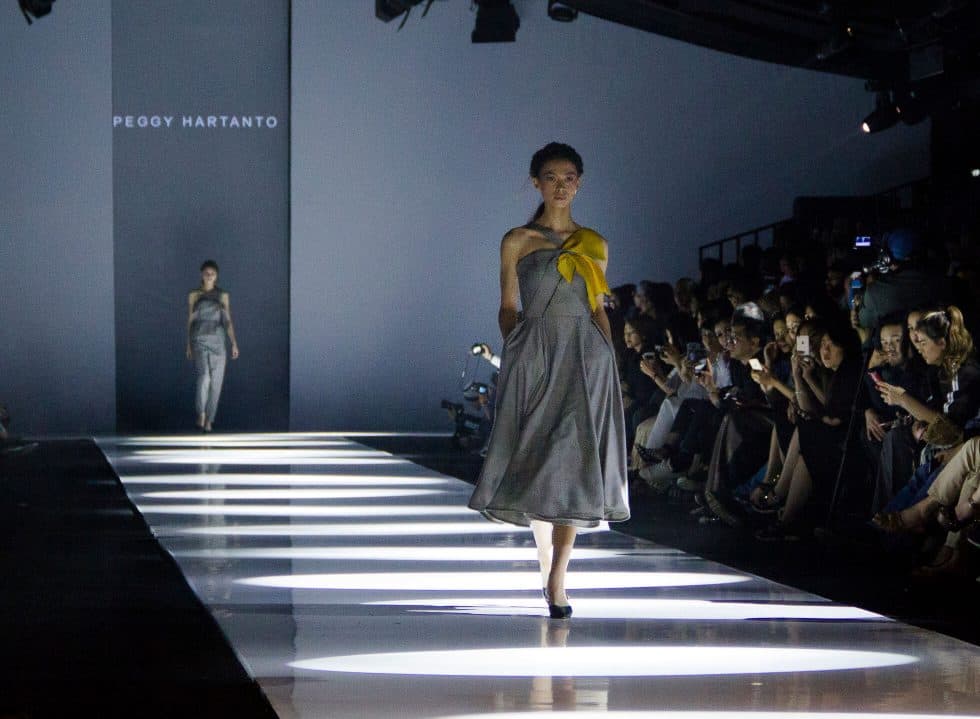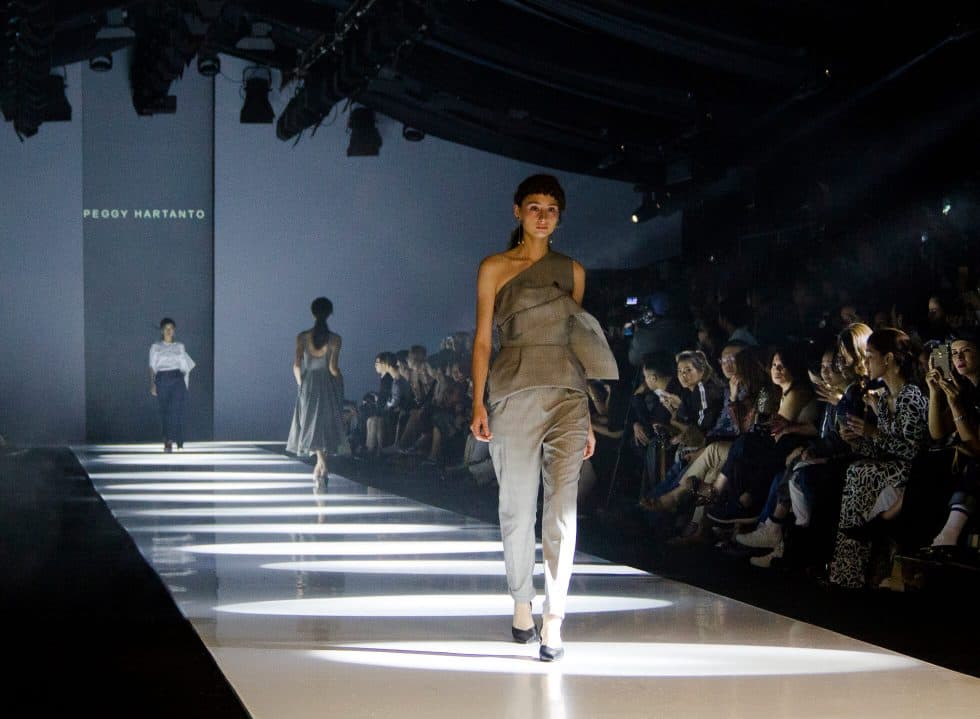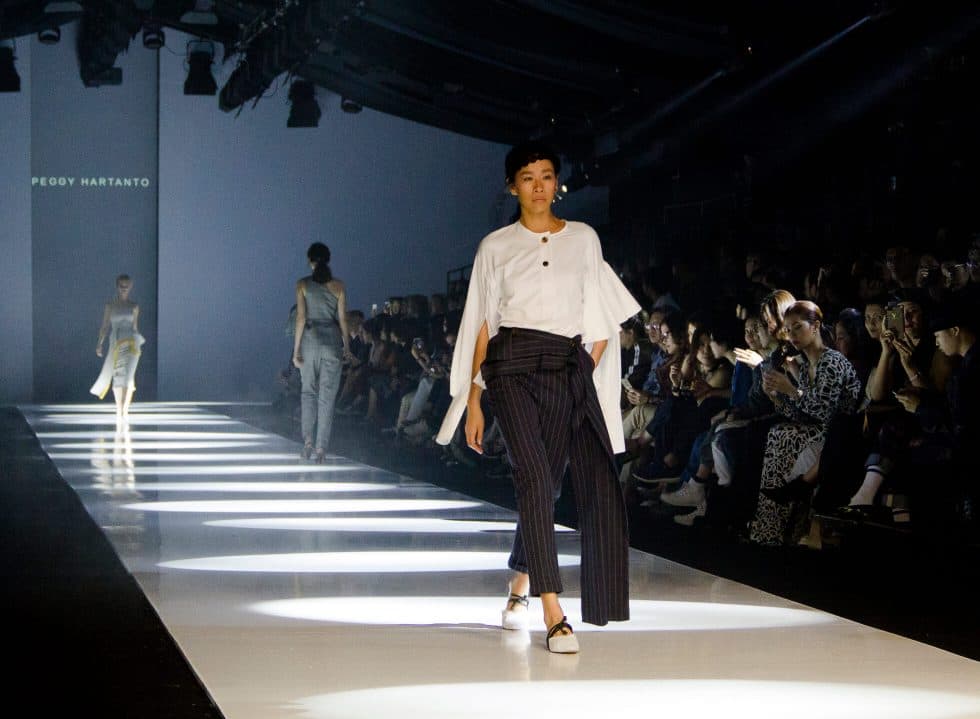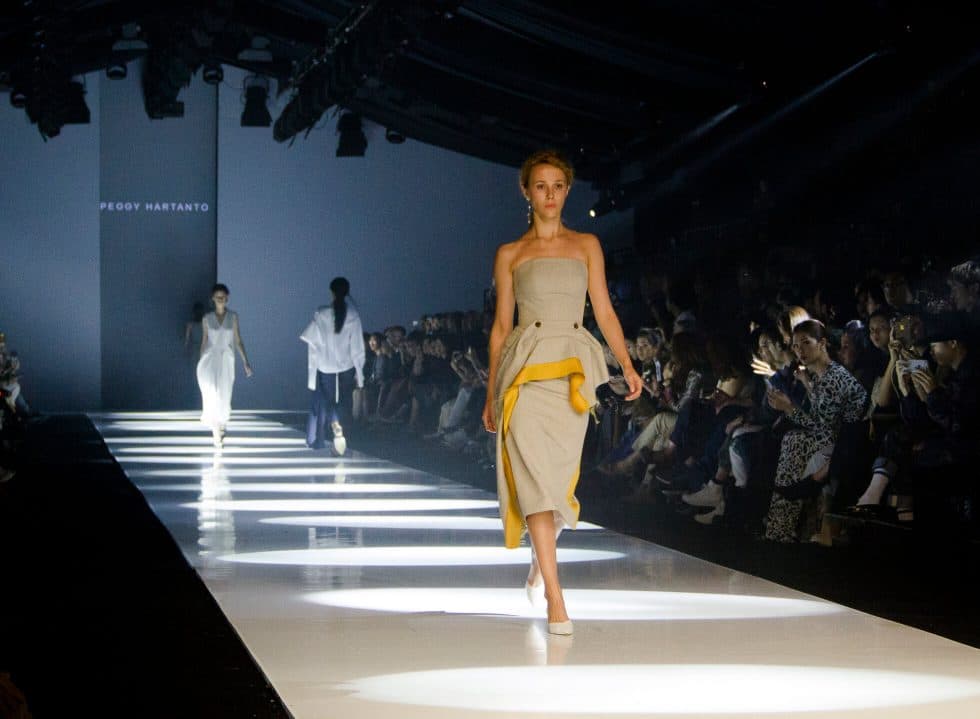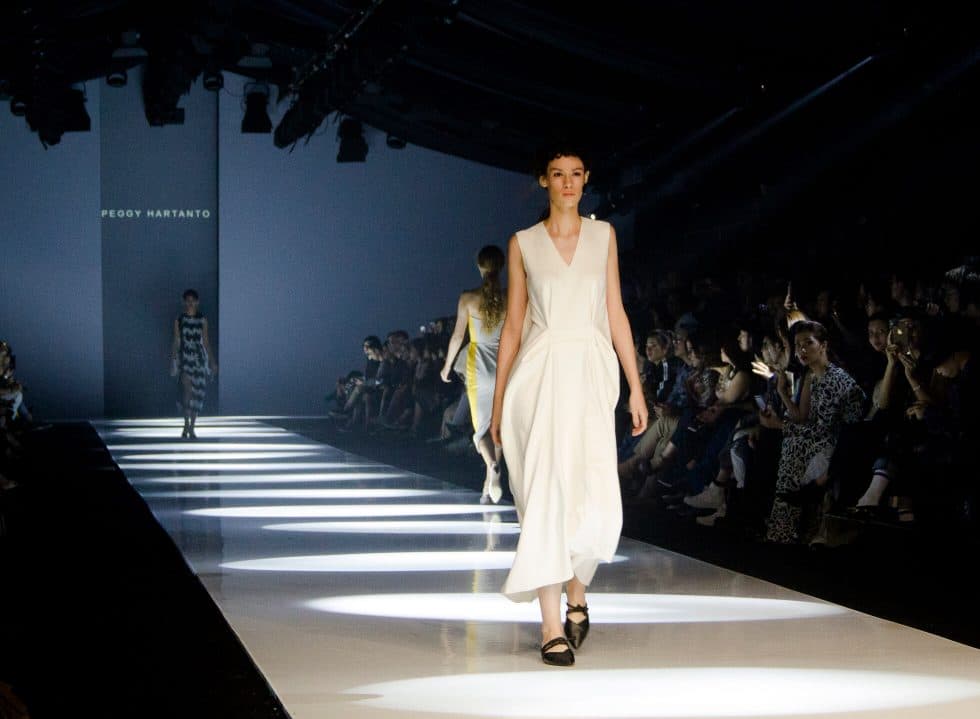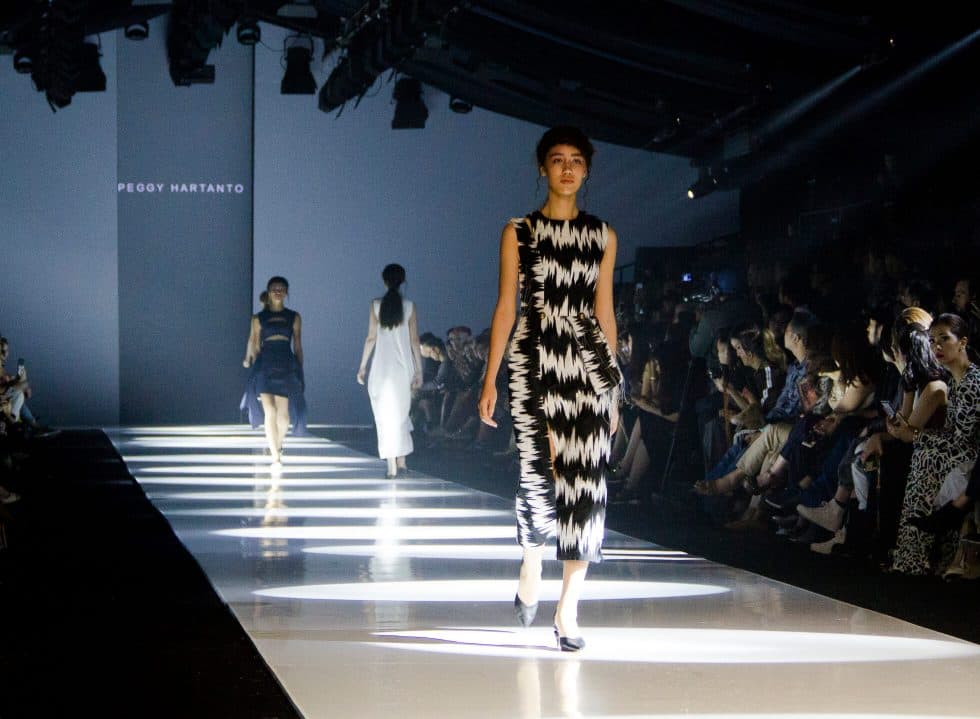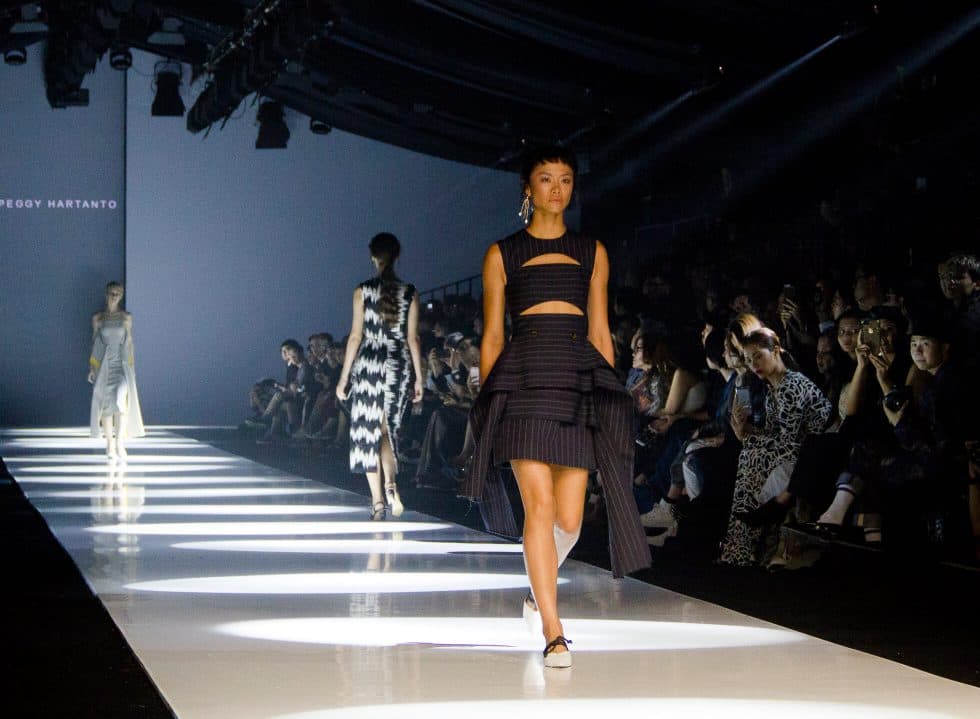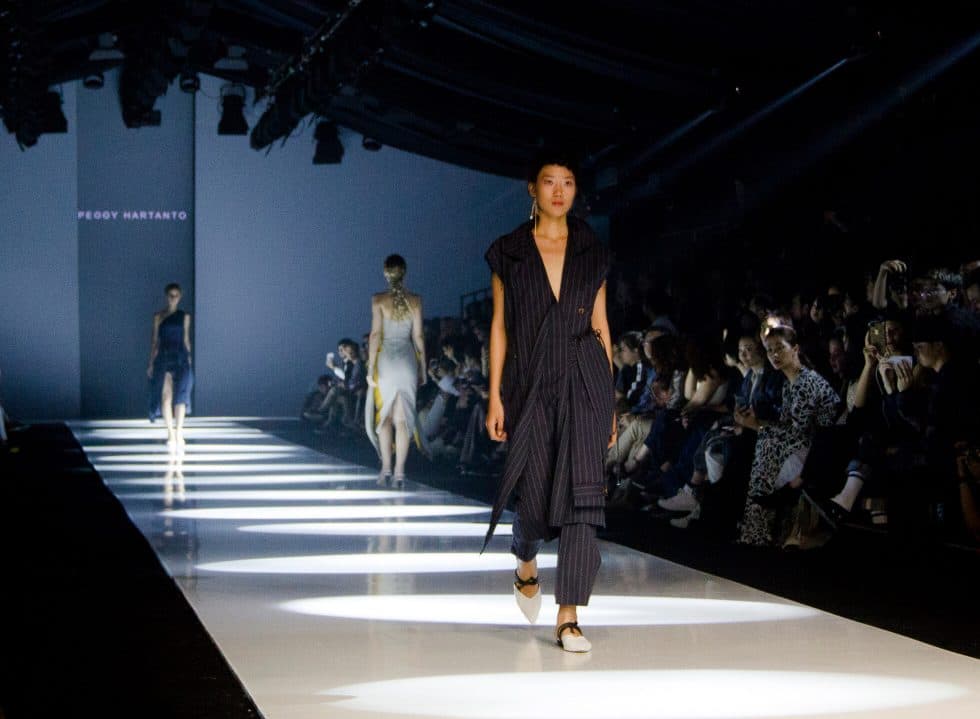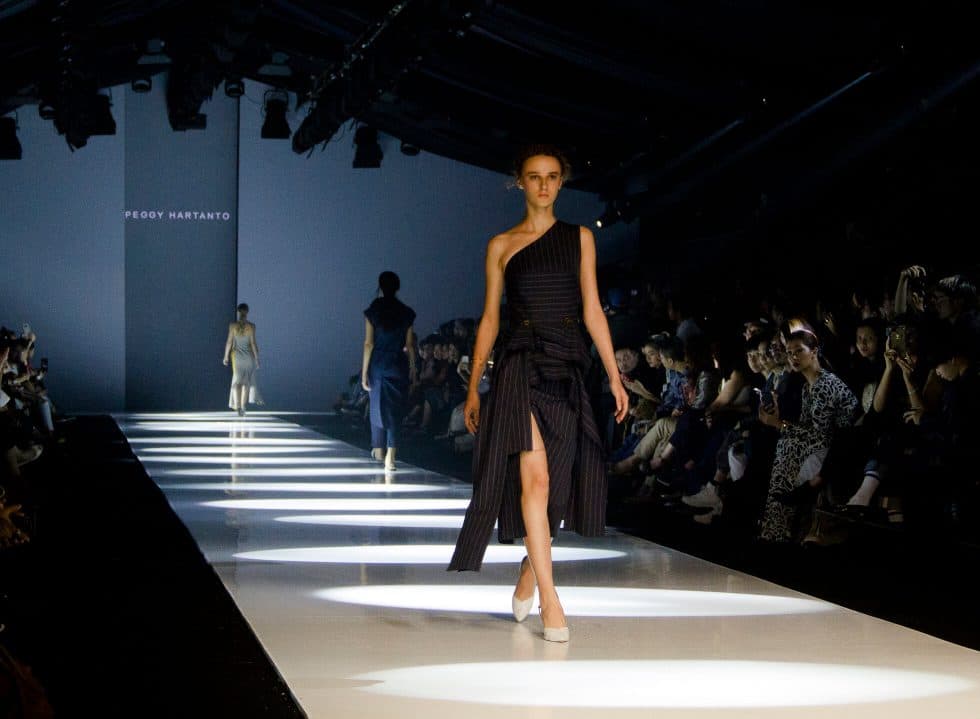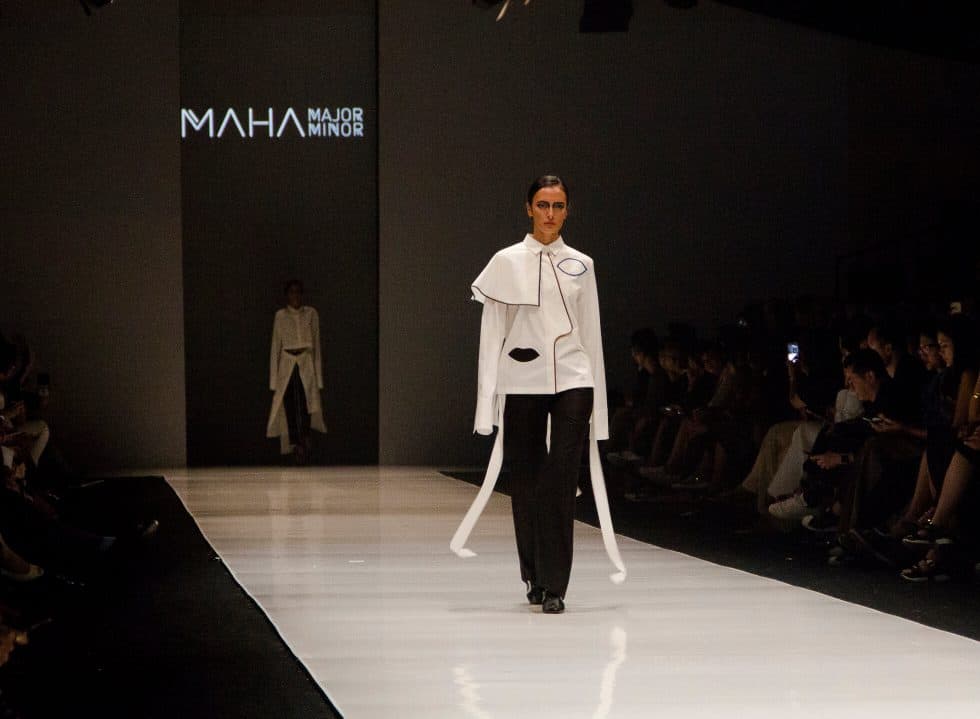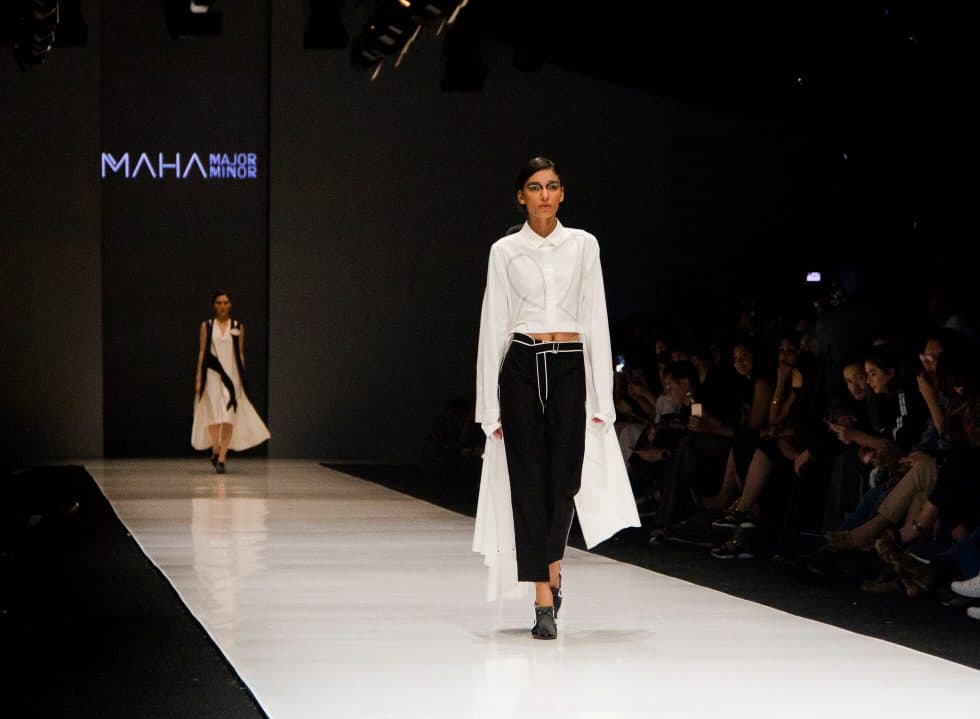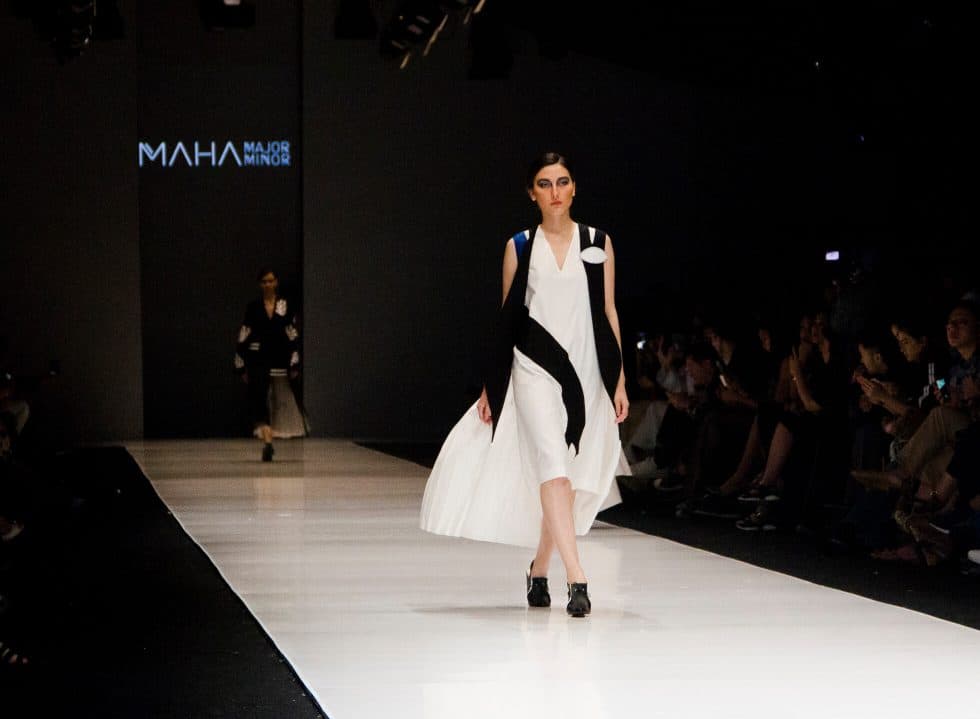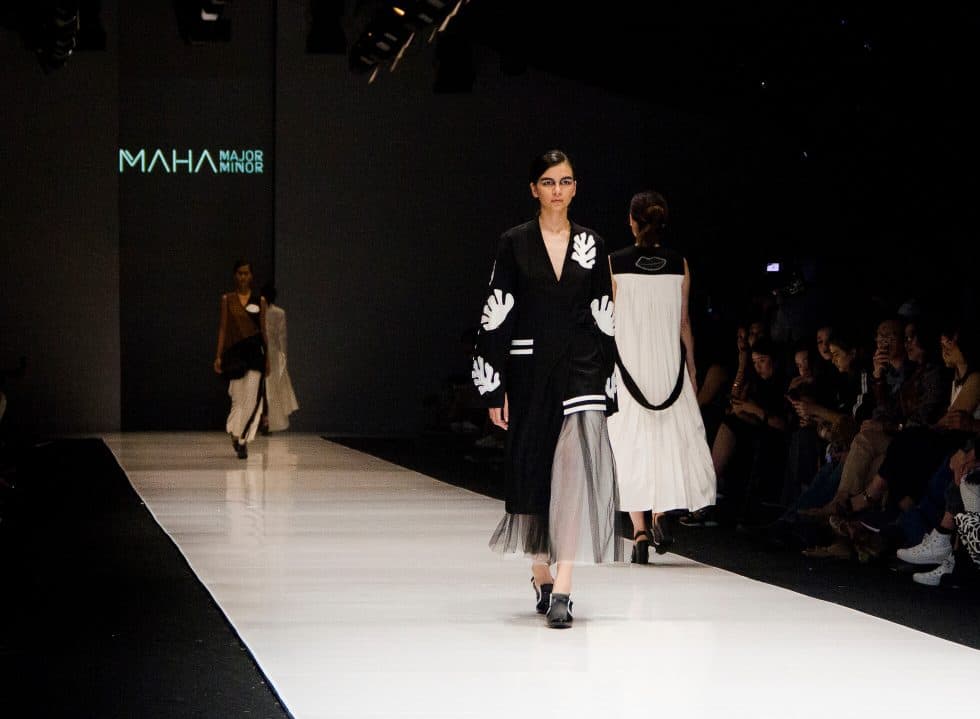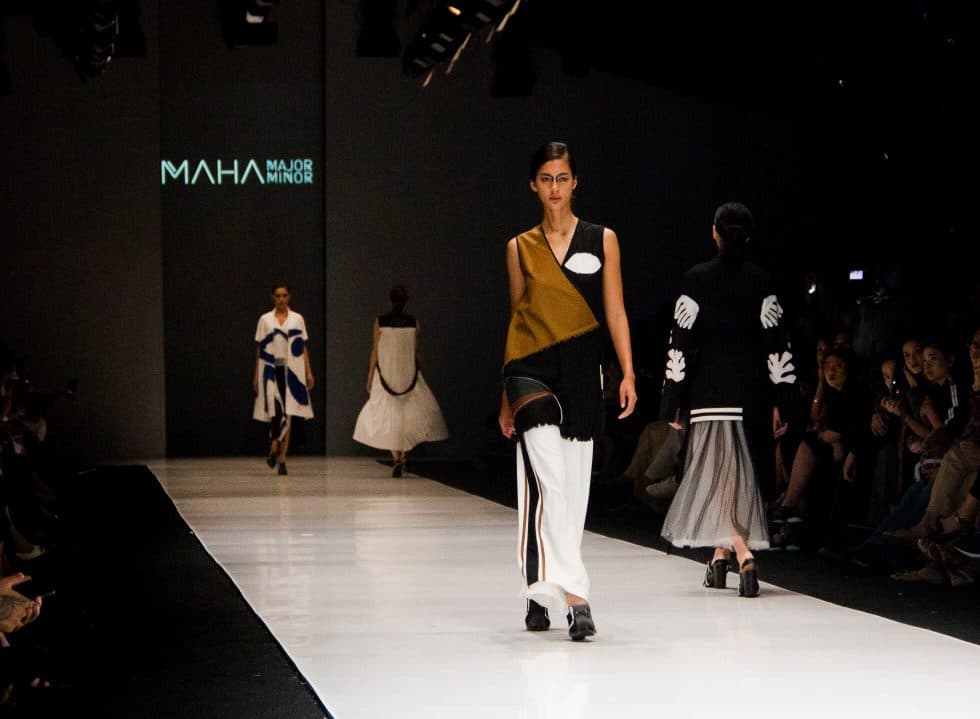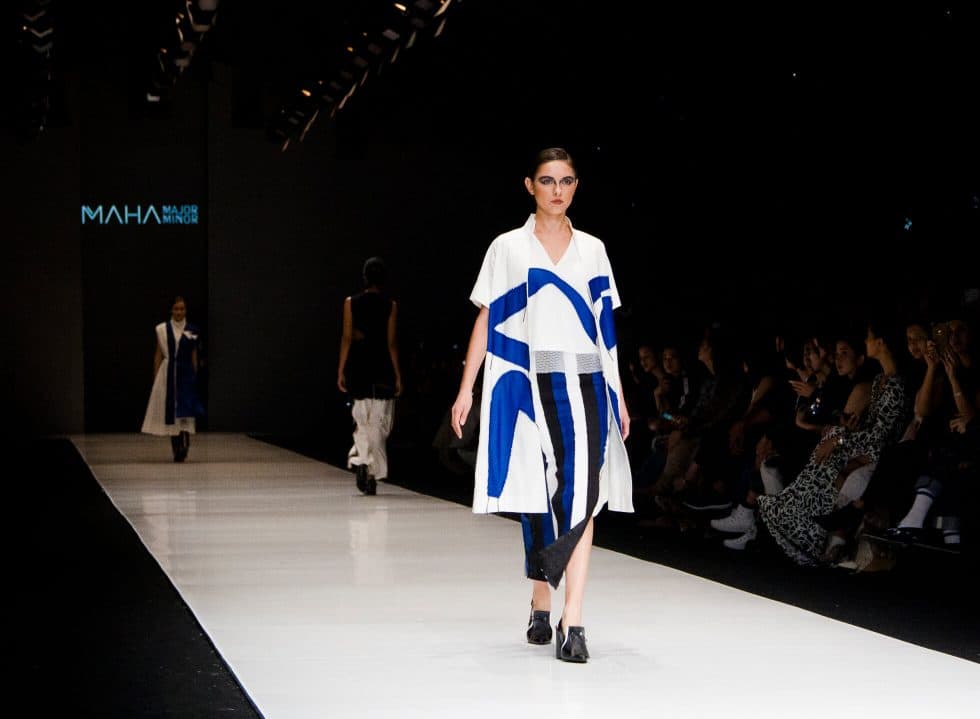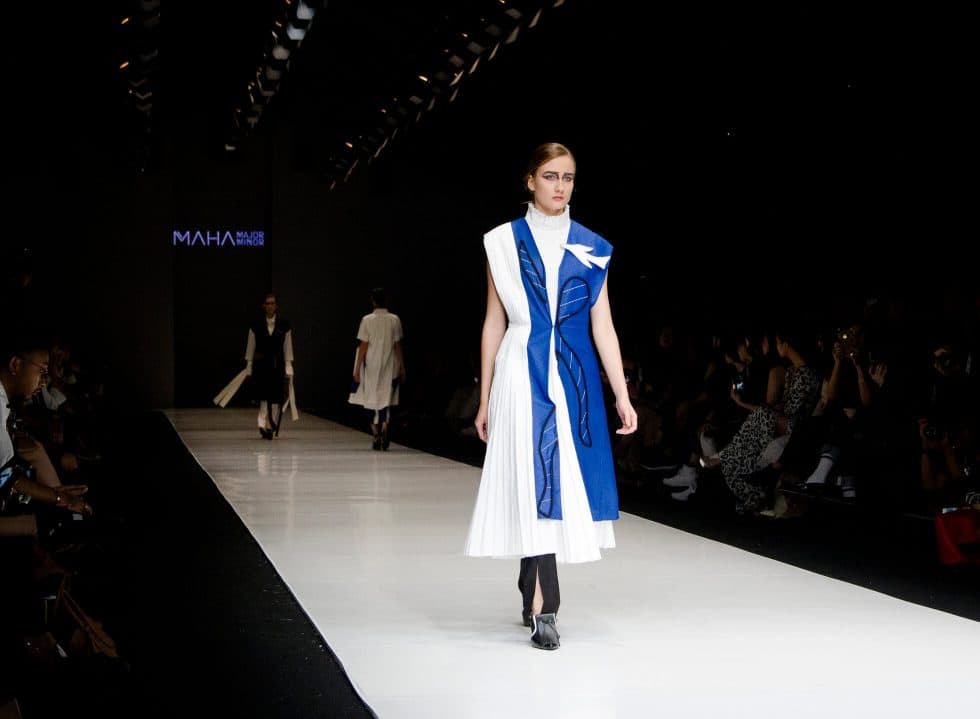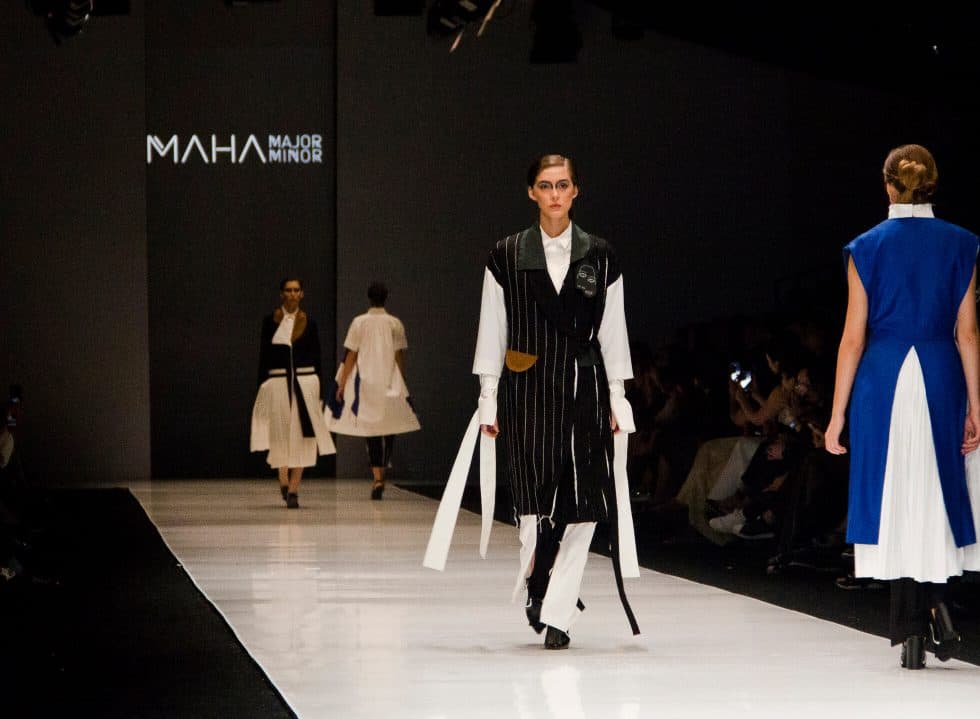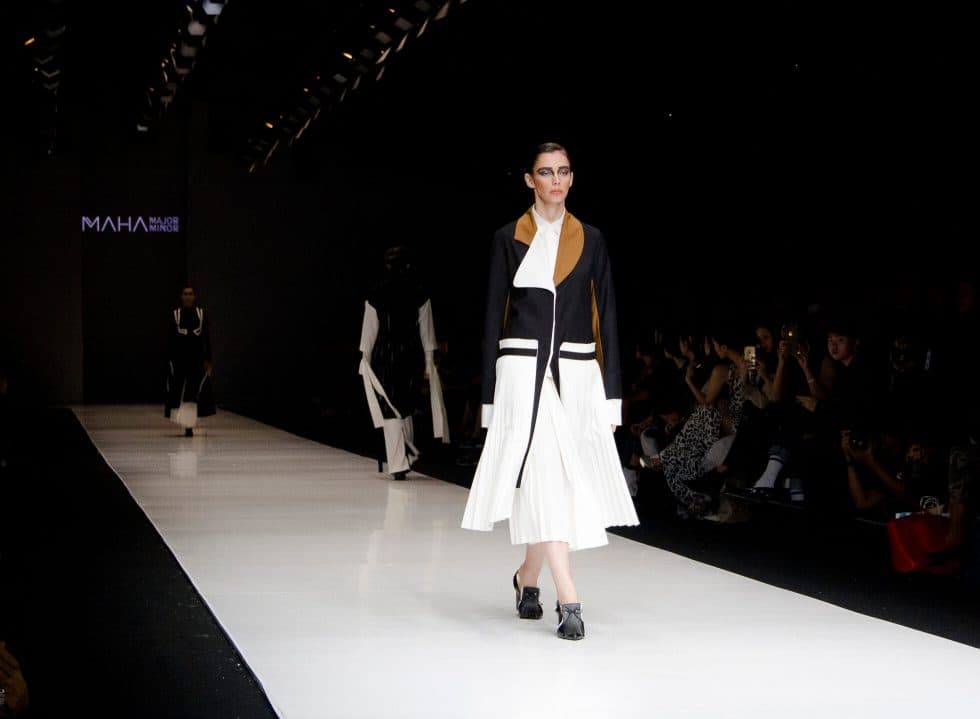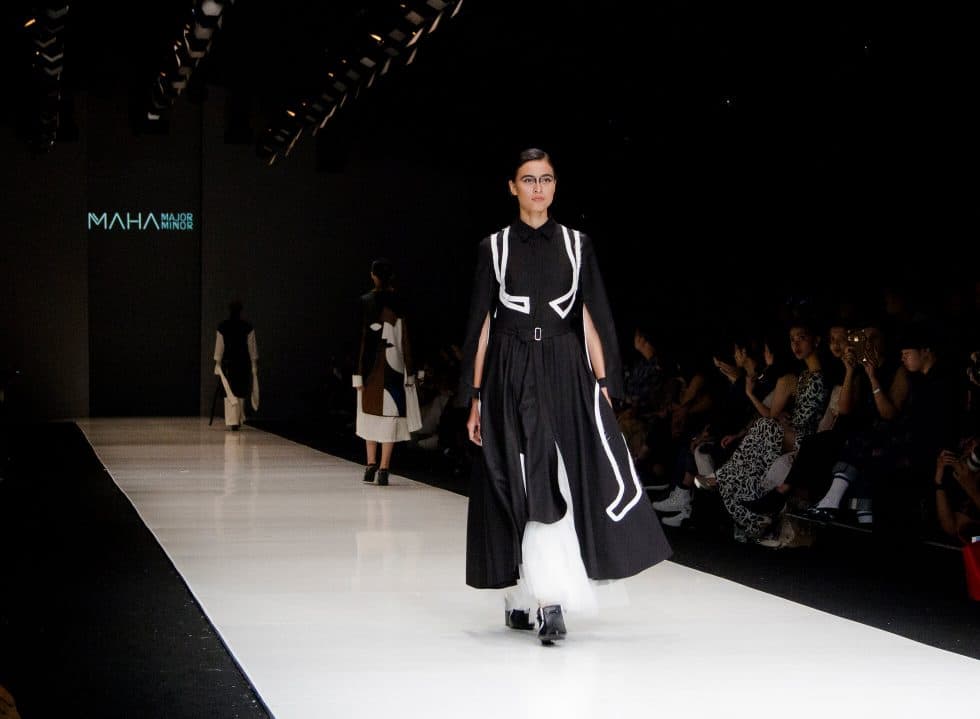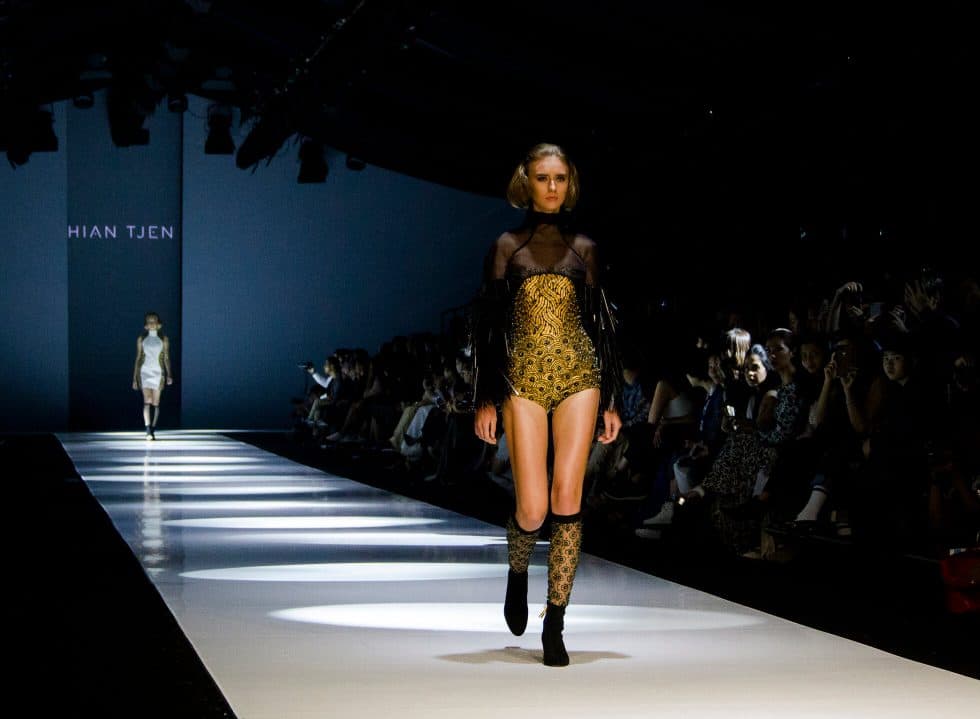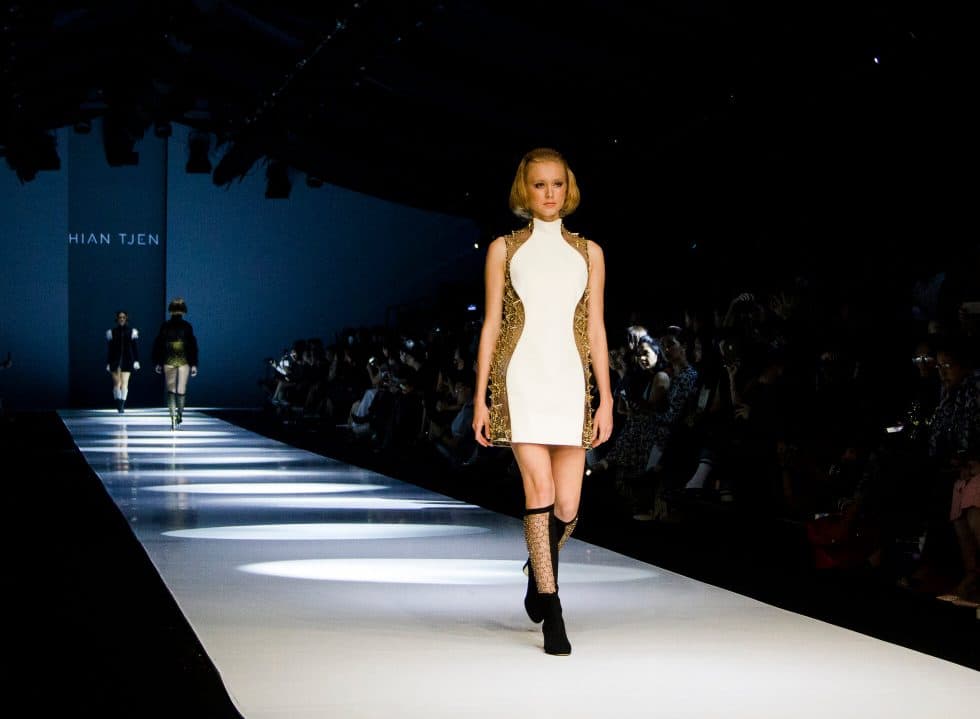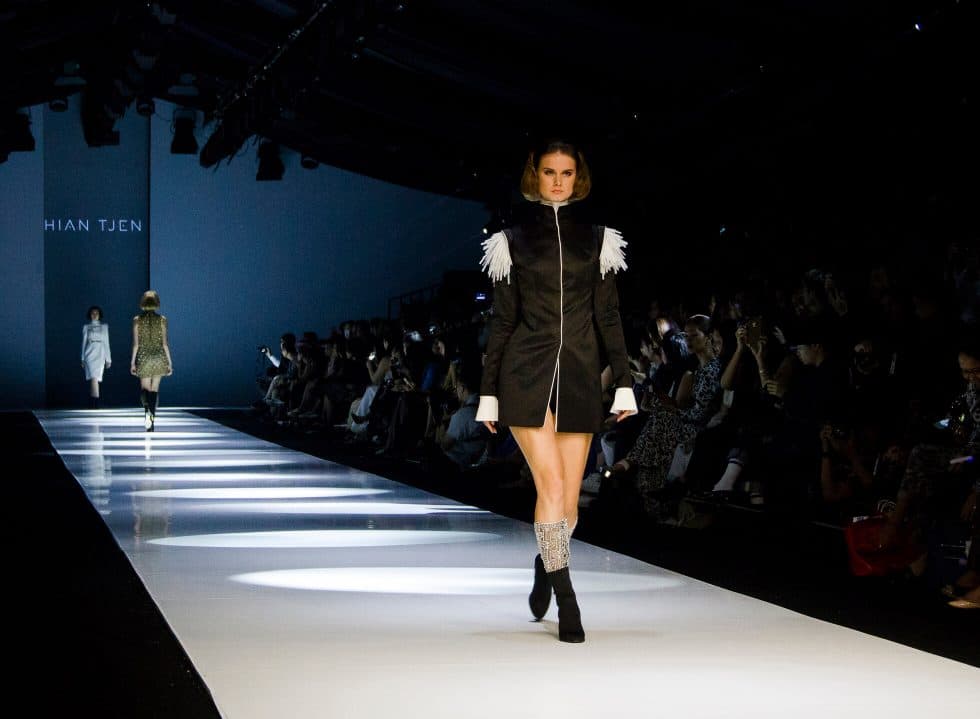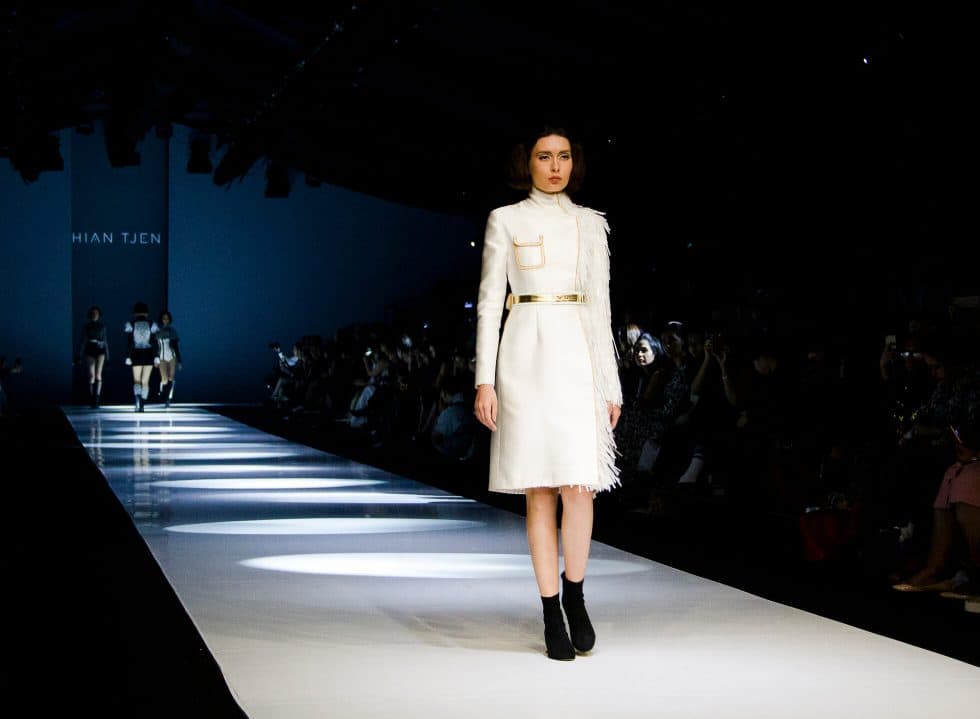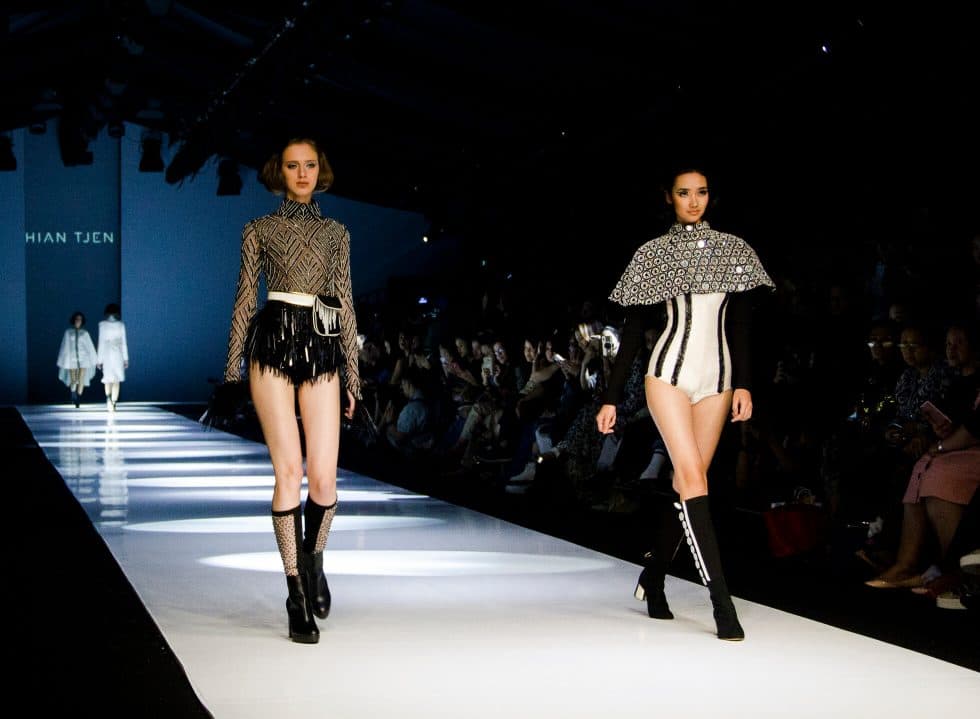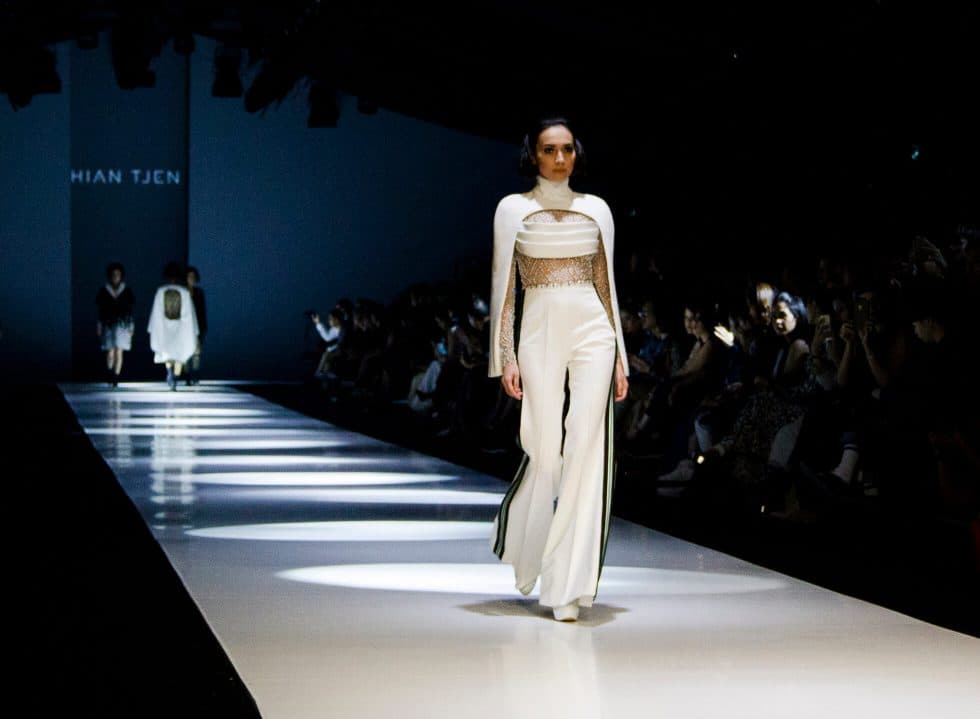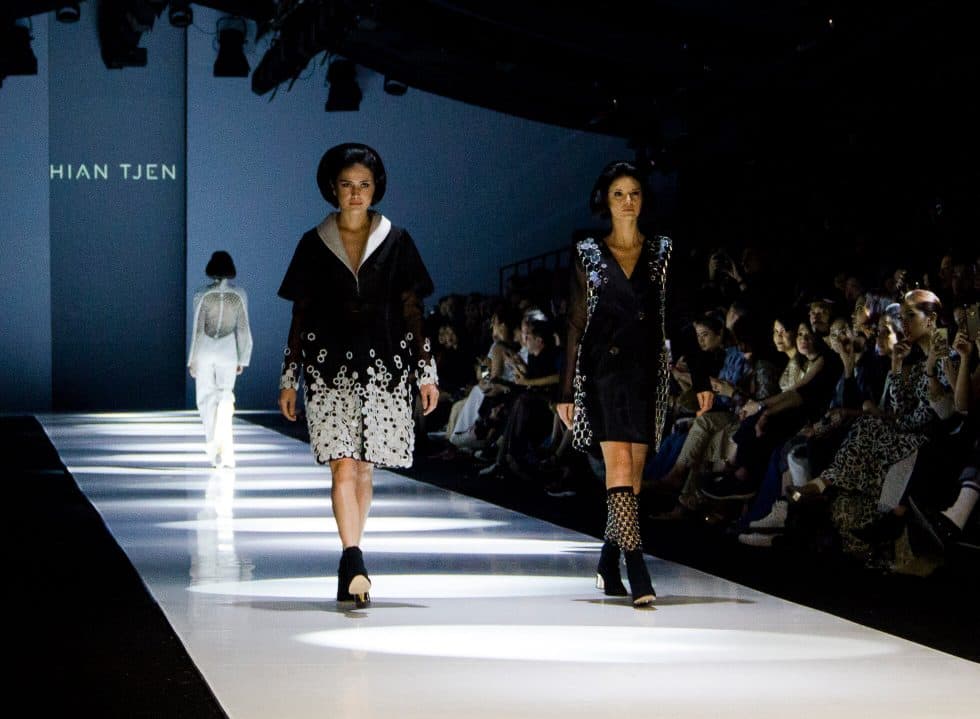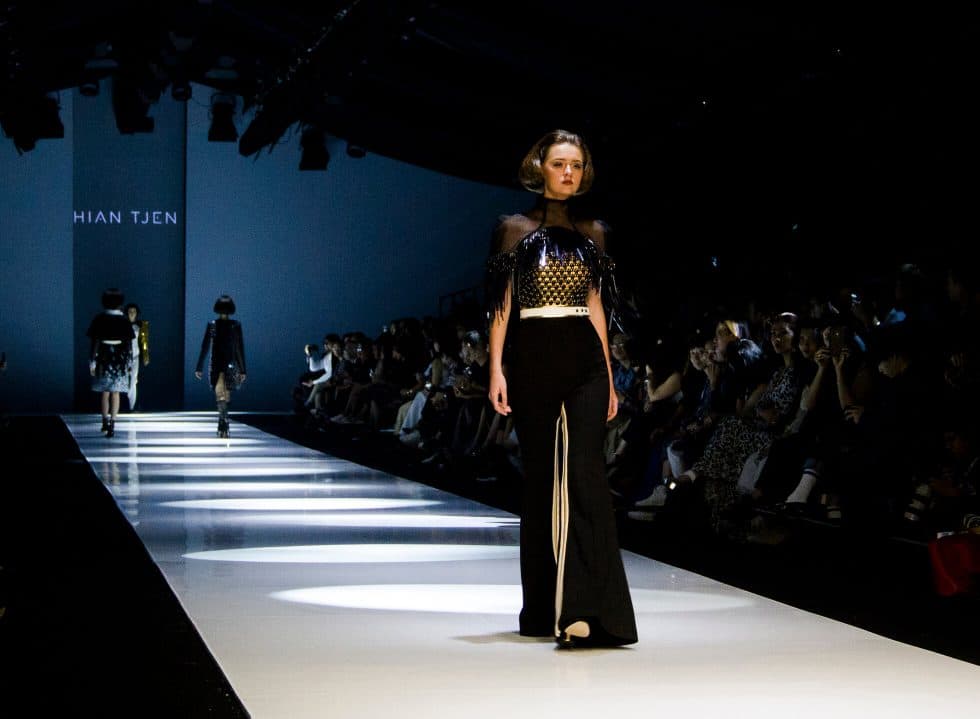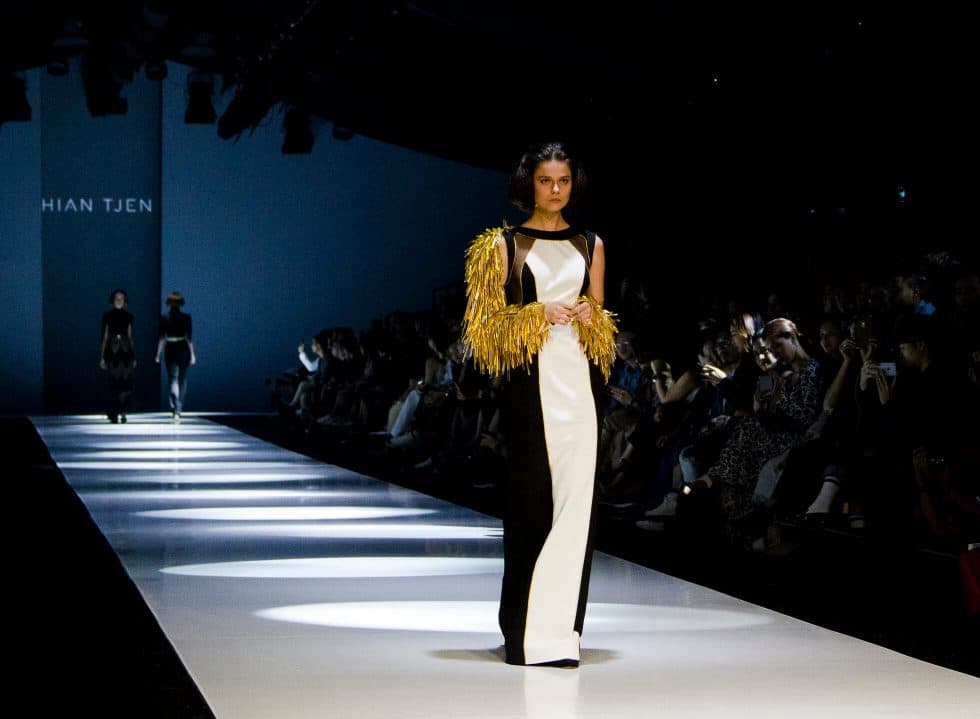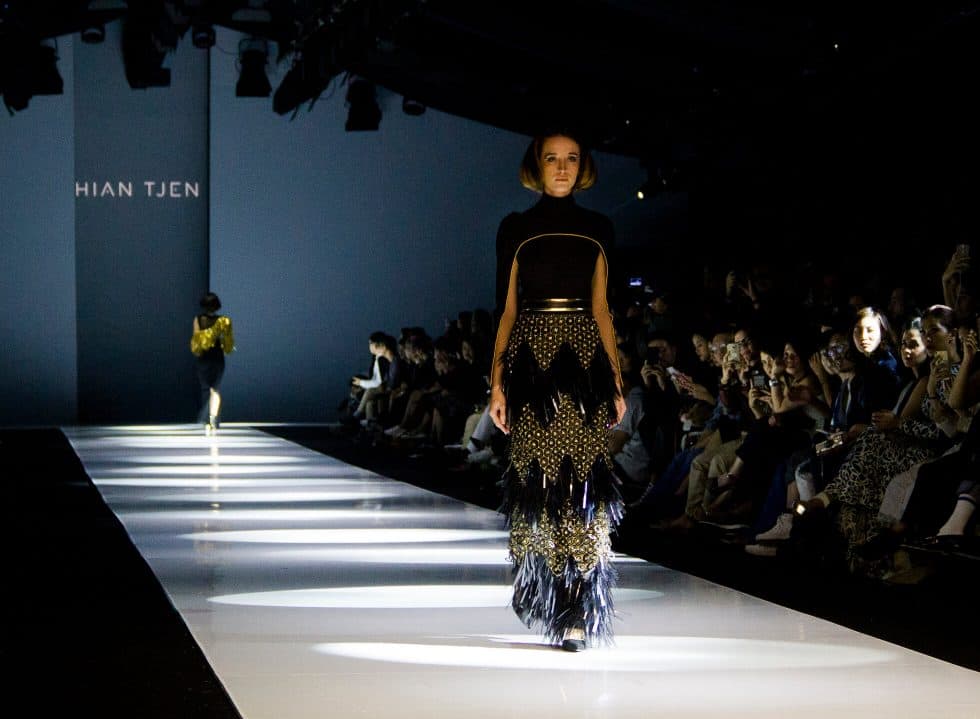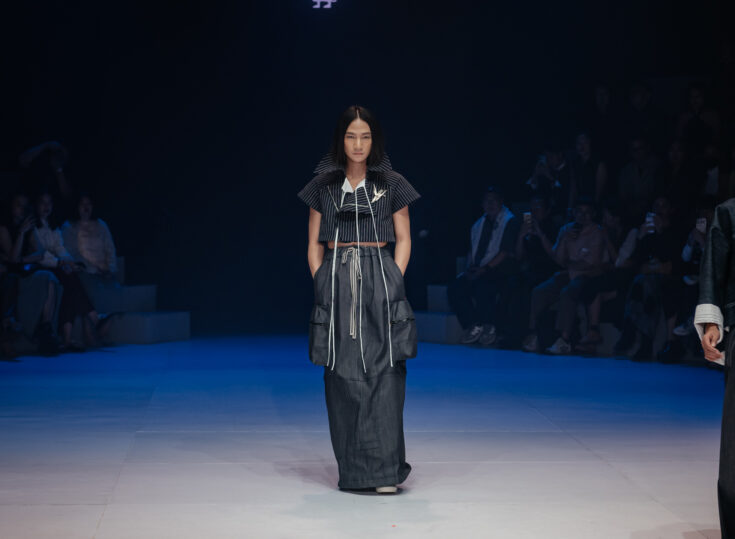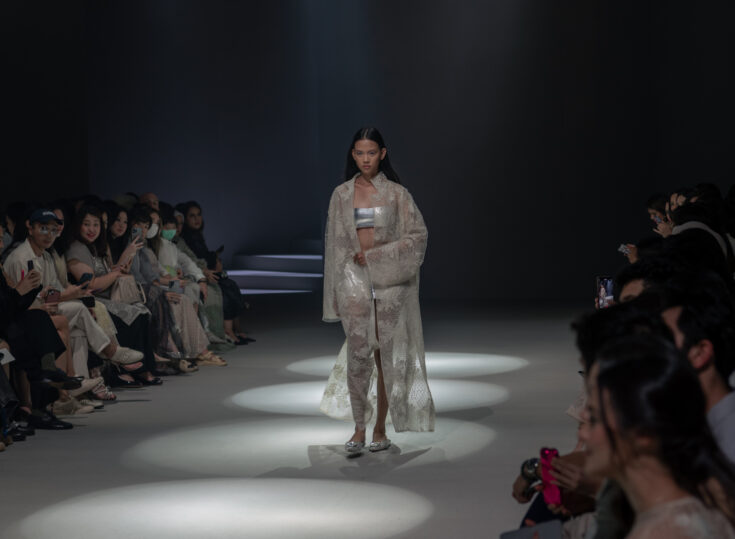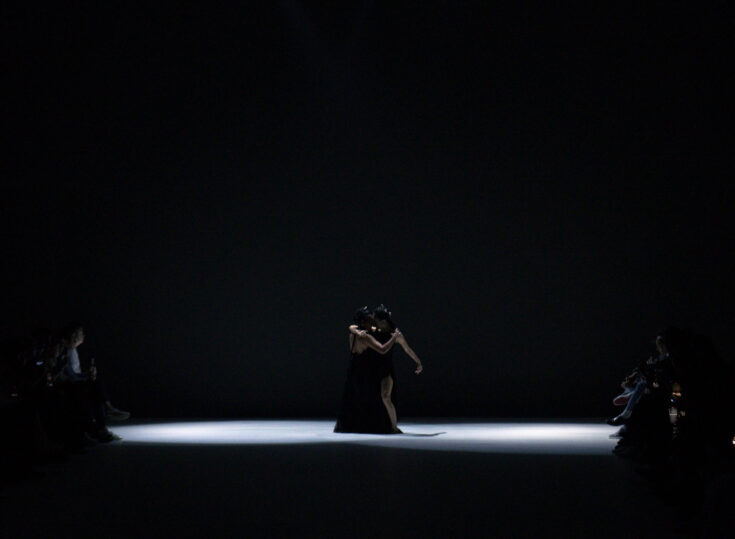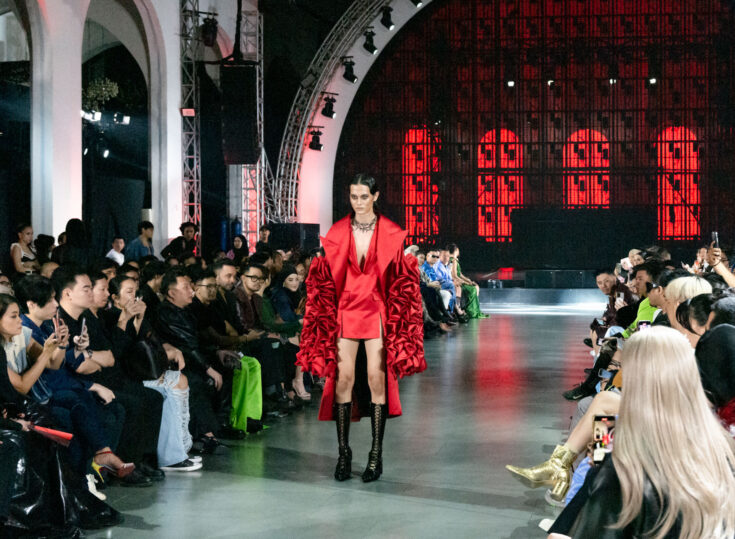As with the tradition of Jakarta Fashion Week (JFW) every year, the week-long event is always closed with the climatic Dewi Fashion Knights (DFK), where five celebrated designers are selected to showcase a compact collection based on a theme. This year, DFK tasked TOTON, Rani Hatta, PEGGY HARTANTO, Major Minor Maha and Hian Tjen under the idea of “Modernism”. But don’t confuse it with the style of arts in during the early 20th century, in which it departs from traditional and classical forms. It has more to do with the quality of thought that makes one a modern character.
The amount of waste that fashion produced every year, the idea of recycling and offering solutions for modern living without neglecting modern dressing are the jumping points for Toton Januar’s show. Similar to his S/S18, Toton’s aim is to deconstruct and reconstruct. As models filed out one by one, it’s as if looking at stylish ragpickers who just happened to acquire those pieces while rummaging through the landfill.
But Toton is not satisfied with just the notions of rags, recycling or the likes. The designer practiced what he preached by using his personal denim clothing for the show as well as unorthodox materials. A white sleeveless top made out of raffia rope was paired with a pair of jeans that appeared to be stitched together like Frankenstein. The pleasure of the show was not just about the message itself but also the amount of details with tactile quality that really popped out. You wish you could reach out and have a feel of those fluffy raffia pants as it swished across the runway.
As a Muslim designer, everything that Rani Hatta does will be automatically linked to her faith as well as her gender. While it can be limiting, that facts also help to inject her clothing with plenty of contexts. Here, Rani appeared to be intrigued with the idea of marrying modest wear with sportswear elements.
The show consisted mainly of heavy coats or jackets for both men and women in monochrome palette with baseball stitches running down the sleeves or the shoulders like vertebrae. Rani’s idea is clear: modern Muslim women are not restrained by the typical modest wear. Plus, why do some people still feel uncomfortable with female Muslim athletes? Unfortunately, the show barely grazed the surface. Rani should have known that she needs to do more to excite especially within the limit of 15 looks.
Even before 2017 is over, Peggy Hartanto has had a good year. Not only was she nominated as one of the contenders for International Woolmark Prize Asia Regional earlier this year, Peggy also got married. Now, she seemed to be interested in starting a new chapter for her eponymous label, to push things forward.
There were extra appendages forming organic shapes against the structured dresses that they were stuck on. A strapless dress came with a long piece of fabric joined at the waist, giving the impression of contorted peplum. In another, they were stuck at the side of the body like a pair of fins. The idea of deformation was present throughout the show that suffused the dress with alluring peculiarity. And even though Peggy is still concern with female figure and sensuality, with this show, it felt as if the women of PEGGY HARTANTO have grown up. It’d be interesting to see the development of the label in the near future.
With only a handful of looks to convey the whole message, Ari Seputra and Inneke Margarethe cleverly employed concept that’s easily identified in one glance. They reworked the famous works of Pablo Picasso and Henri Matisse, whom many considered as the founding fathers of Modern Art, and applied them as motifs. It worked mainly because of the sense of childlike quality that’s affecting.
While the influence of Picasso came in abstract lines on clothes that formed the idea of a face when viewed from far, it was Matisse’s elements that were the most evident and appealing. Art enthusiasts will have a good time identifying masterpieces, such as The Blue Nude, The Fall of Icarus and La Gerbe. Still, Ari and Inneke didn’t neglect the clothes. There were highly wearable pieces that covered dresses, bottoms to outerwear and the idea of ease and mobility echoed their earlier show in JFW.
Hian Tjen was clearly besotted with the swinging 60s and the era’s optimistic outlook on future. The thigh-baring looks and beehive hairdos made the models looked as if they’ve stepped out from the set of Barbarella, Jetsons style. Except that they were shinier and most likely, more expensive.
A black high neck coat has white acrylic fringes that resembled icicles shooting out from the shoulders. Then there were black cape beaded with hexagonal mirrors that reflected white glares at the audience when model passes the spotlight. Granted that we could all be possible wearing shiny beaded clothing in the future (well, who knows?), but the overall effects felt like a parody instead. Unfortunately, they looked dated and the least modern out of all the collections showed in Dewi Fashion Knights.
